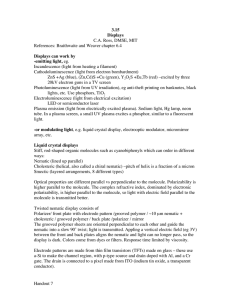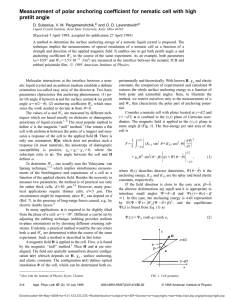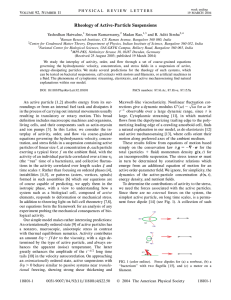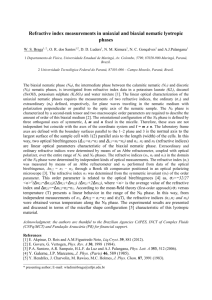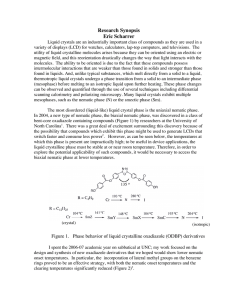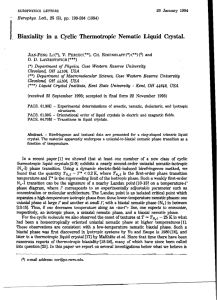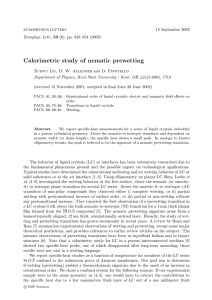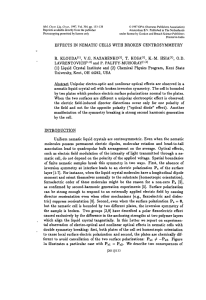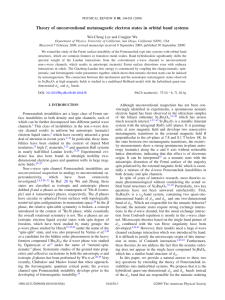The investigation of dimeric materials with a nematic
advertisement
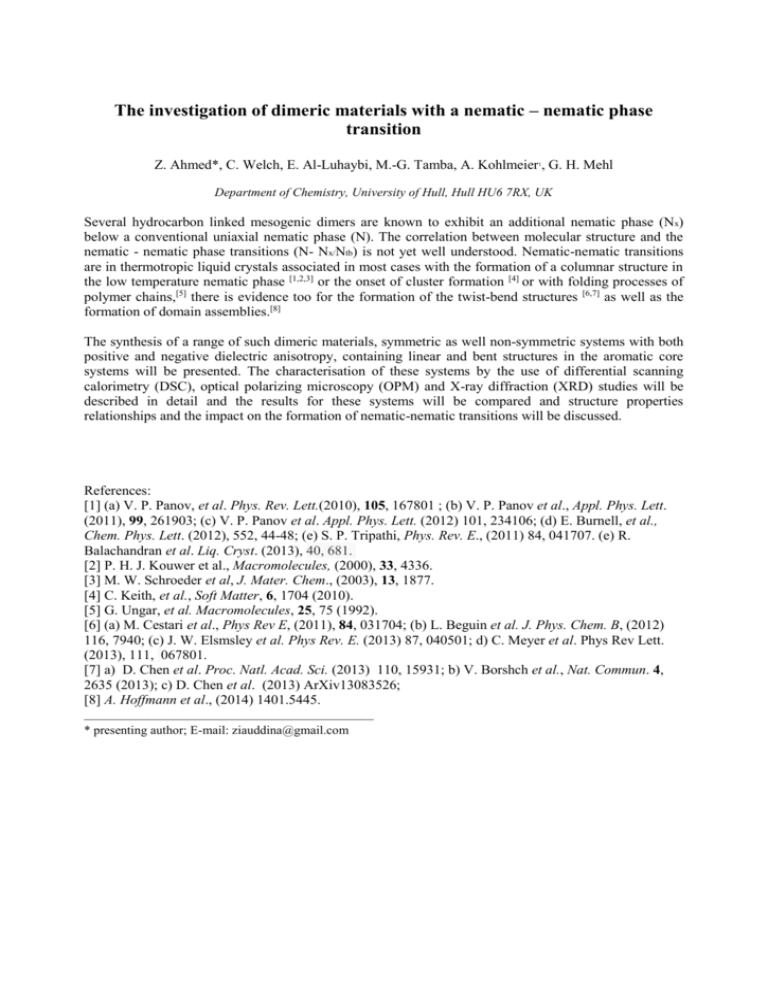
The investigation of dimeric materials with a nematic – nematic phase transition Z. Ahmed*, C. Welch, E. Al-Luhaybi, M.-G. Tamba, A. Kohlmeier1, G. H. Mehl Department of Chemistry, University of Hull, Hull HU6 7RX, UK Several hydrocarbon linked mesogenic dimers are known to exhibit an additional nematic phase (Nx) below a conventional uniaxial nematic phase (N). The correlation between molecular structure and the nematic - nematic phase transitions (N- Nx/Ntb) is not yet well understood. Nematic-nematic transitions are in thermotropic liquid crystals associated in most cases with the formation of a columnar structure in the low temperature nematic phase [1,2,3] or the onset of cluster formation [4] or with folding processes of polymer chains,[5] there is evidence too for the formation of the twist-bend structures [6,7] as well as the formation of domain assemblies.[8] The synthesis of a range of such dimeric materials, symmetric as well non-symmetric systems with both positive and negative dielectric anisotropy, containing linear and bent structures in the aromatic core systems will be presented. The characterisation of these systems by the use of differential scanning calorimetry (DSC), optical polarizing microscopy (OPM) and X-ray diffraction (XRD) studies will be described in detail and the results for these systems will be compared and structure properties relationships and the impact on the formation of nematic-nematic transitions will be discussed. References: [1] (a) V. P. Panov, et al. Phys. Rev. Lett.(2010), 105, 167801 ; (b) V. P. Panov et al., Appl. Phys. Lett. (2011), 99, 261903; (c) V. P. Panov et al. Appl. Phys. Lett. (2012) 101, 234106; (d) E. Burnell, et al., Chem. Phys. Lett. (2012), 552, 44-48; (e) S. P. Tripathi, Phys. Rev. E., (2011) 84, 041707. (e) R. Balachandran et al. Liq. Cryst. (2013), 40, 681. [2] P. H. J. Kouwer et al., Macromolecules, (2000), 33, 4336. [3] M. W. Schroeder et al, J. Mater. Chem., (2003), 13, 1877. [4] C. Keith, et al., Soft Matter, 6, 1704 (2010). [5] G. Ungar, et al. Macromolecules, 25, 75 (1992). [6] (a) M. Cestari et al., Phys Rev E, (2011), 84, 031704; (b) L. Beguin et al. J. Phys. Chem. B, (2012) 116, 7940; (c) J. W. Elsmsley et al. Phys Rev. E. (2013) 87, 040501; d) C. Meyer et al. Phys Rev Lett. (2013), 111, 067801. [7] a) D. Chen et al. Proc. Natl. Acad. Sci. (2013) 110, 15931; b) V. Borshch et al., Nat. Commun. 4, 2635 (2013); c) D. Chen et al. (2013) ArXiv13083526; [8] A. Hoffmann et al., (2014) 1401.5445. _____________________________________________ * presenting author; E-mail: ziauddina@gmail.com
![[1]. In a second set of experiments we made use of an](http://s3.studylib.net/store/data/006848904_1-d28947f67e826ba748445eb0aaff5818-300x300.png)


